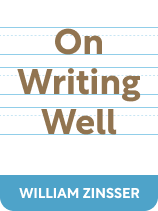

This article is an excerpt from the Shortform book guide to "On Writing Well" by William Zinsser. Shortform has the world's best summaries and analyses of books you should be reading.
Like this article? Sign up for a free trial here .
What makes a good critique? What things should avoid when criticizing a creative work?
In his book On Writing Well, American writer, journalist, and teacher William Zinsser shares his tips on how to write a good critique. He lists five things you should keep in mind when criticizing someone’s work.
Here are some tips on how to write a good critique.
Critiquing a Work
Zinsser explains that critiques are another popular form of nonfiction, where an author reviews the artistic merit of a creative work. This work can be in any medium, such as visual art, literature, cinema, and so on. He believes that the writer should appreciate and be familiar with the medium as a whole since criticisms situate the work into the broader context of other similar works. For example, when writing a review of Ferris Bueller’s Day Off, you could situate the reader into the genre of 1980’s teen movies, such as The Breakfast Club and Grease.
(Shortform note: Zinsser focuses on using criticisms to situate readers into the broader context of a genre. But in How to Read a Book, Mortimer J. Adler and Charles van Doren explain that criticizing a book means to comment, “I agree,” “I disagree,” or “I suspend judgment.” Their views can also be adapted for other media. When you’re criticizing an author, Adler and Van Doren caution against being overly contentious or combative. A discussion isn’t something to be won: It’s an opportunity to discover the truth. Remember that disagreement is an opportunity to learn something new.)
Here’s how to write a critique well:
1) Go into the criticism with an open mind. If you anticipate hating the movie or book you’re critiquing, this will alter your perception—and your writing—of the work. Zinsser believes a critic who is negative about everything she reviews is being lazy.
(Shortform note: In How to Read a Book, Mortimer J. Adler and Charles van Doren agree with Zinsser’s advice to have an open mind when criticizing. They encourage you to earnestly try to take the author’s point of view as you read. They also advise against playing devil’s advocate by default. Don’t resent the author for being right or teaching you something new.)
2) Don’t be too technical. Zinsser argues that writers use jargon to sound intelligent, like mentioning a specific camera technique in film. Because most readers lack this technical vocabulary, they won’t understand these references.
(Shortform note: While you should avoid using jargon, other experts believe it’s okay to comment on technical aspects, such as the camera angles in a movie. But pointing out these technical aspects should support a larger idea, like how the camera angle creates a certain mood, not just pointing out a technique for the sake of pointing it out. When pointed out to support your commentary, it can enhance your piece since it will provide more description for the reader.)
3) Avoid spoilers. Don’t explain the whole plot of the novel or movie. Instead, give the reader enough information to determine whether or not she wants to read or see the work.
(Shortform note: Many people claim to dislike spoilers since they only have one chance to experience a creative work for the first time—after that the ending is automatically spoiled. But a study found that spoiling a story may actually increase someone’s enjoyment of the work since they’ll be able to make connections about important elements and themes of the story. If you’re unsure about whether to include a spoiler, try including a disclaimer before the portion of the article that contains spoilers, allowing the reader to choose whether or not to spoil the creative work for themselves.)
4) Show, don’t tell. Use examples and descriptions of the artist’s work to illustrate the point you’re making. For example, rather than saying the costumes were drab or boring, write about how the muted brown dress hung loosely on the protagonist.
(Shortform note: Experts explain that showing what you saw is the first step in critiquing a work. You must first describe what you saw, so that you can then analyze, interpret, and evaluate the work—if you don’t provide any descriptions, your reader won’t have the necessary context to understand why you arrived at your conclusion of the piece.)
5) Be confident about your perspective on the work. Don’t backtrack on what you said with phrases like “but it’s too soon to tell.” This undermines your credibility as a critic.
(Shortform note: In How to Read a Book, Mortimer J. Adler and Charles van Doren give another reason to confidently express your perspective. They believe that if you don’t acknowledge and express the feelings that come up as you experience the work, those feelings will fester and actually prevent you from evaluating the piece with a clear head.)

———End of Preview———
Like what you just read? Read the rest of the world's best book summary and analysis of William Zinsser's "On Writing Well" at Shortform .
Here's what you'll find in our full On Writing Well summary :
- A back-to-basics approach to the craft of writing
- How to practice simple, clear, and engaging writing—even if you're not a writer
- How to effectively put your ideas into words






